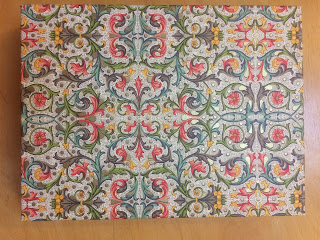Her reasoning caught my attention then,
and I am still thinking about it even now . "Flowers or vegetables?"
is an important question for a gardener. Plenty of gardeners--maybe even
the majority--grow both. But some gardeners are mainly interested in creating a
beautiful landscape, while others think flowers are a waste of space since you
can't eat them. (At least, not most of them, and not in a very sustaining way.)
I belong to the "both"
school. I love flowers, but I can't imagine having a garden without growing
some tomatoes, maybe some carrots, certainly basil and parsley. When I browse
seed catalogs, I spend at least as much time contemplating the enormous range
of possible lettuces, sizes of carrots, varied summer squash and of course
tomatoes, as I do looking at photos of zinnias, violas, and sweet peas (so
lovely and so unsuited to my climate.)
Why grow vegetables? As my fellow
gardener pointed out, I do live in a town with a flourishing farmer's market.
Most of the vegetables I grow (at least the ones I grow successfully), I could
buy. They offer plenty of heirloom tomatoes, cute squash, leafy greens and so
on. They sell beautiful green bouquets of basil. Most of their vegetables look
better than mine, and I could pick and choose the ones I want.
I asked a similar question
earlier about making homemade French bread. I can buy better French bread locally,
so why make it? But I don't think the answer is the same in the two cases. With
French bread, I make it in large part for the challenge of the thing. I don't
grow vegetables for the challenge of it. In fact, I prefer vegetables that are
easy to grow and don't require much fuss.
Do I grow my own vegetables so I can
get them exactly the way I want, as in the case of making myself a pair of lightweight green corduroy pants with double pleats? Or the time I tried to
manufacture a grocery bag that was washable and yet would stay open easily?
There is certainly an element of choice.
When I grow my own vegetables, I can choose unusual varieties that aren't
offered at the Farmer's Market. Getting to choose is certainly what keeps me
browsing seed catalogs through the winter.
However, some of the varieties I grow are
available at the Farmer's Market. Every year I plant a couple of Sungold
tomatoes, even though I can buy the little orange globes by the pint. And while
I've experimented with different kinds of basil, I've discovered that
when I'm cooking I actually prefer plain, basic basil. As a result, that's
mostly what I grow now.
For some of the vegetables, and
especially for the herbs, it is helpful to be able to
go out back and pick just what I need, when I need it. A few leaves of basil, some
sprigs of parsley, just enough lettuce for a salad. In fact, I should probably
keep this in mind when planning and give priority to plants that don't store
well or are used in small quantities.
So why grow any other vegetables?
The answer, I think, is that there is
just something very appealing about growing some of my own food. It's
the feeling of providing for myself--even if, in truth, I've got hardly
enough for one meal. It feels (ironically) deeply practical. This is
probably the reason I keep planting fruit trees and bushes, even though the
squirrels and birds make off with most of it. I could plant purely ornamental
trees, but I like the thought of producing fruit in my own backyard.
Hyacinths may feed the soul, but peach
trees feed the stomach as well. (Or, given squirrel thievery, maybe just the
imagination.)
Till next post.














